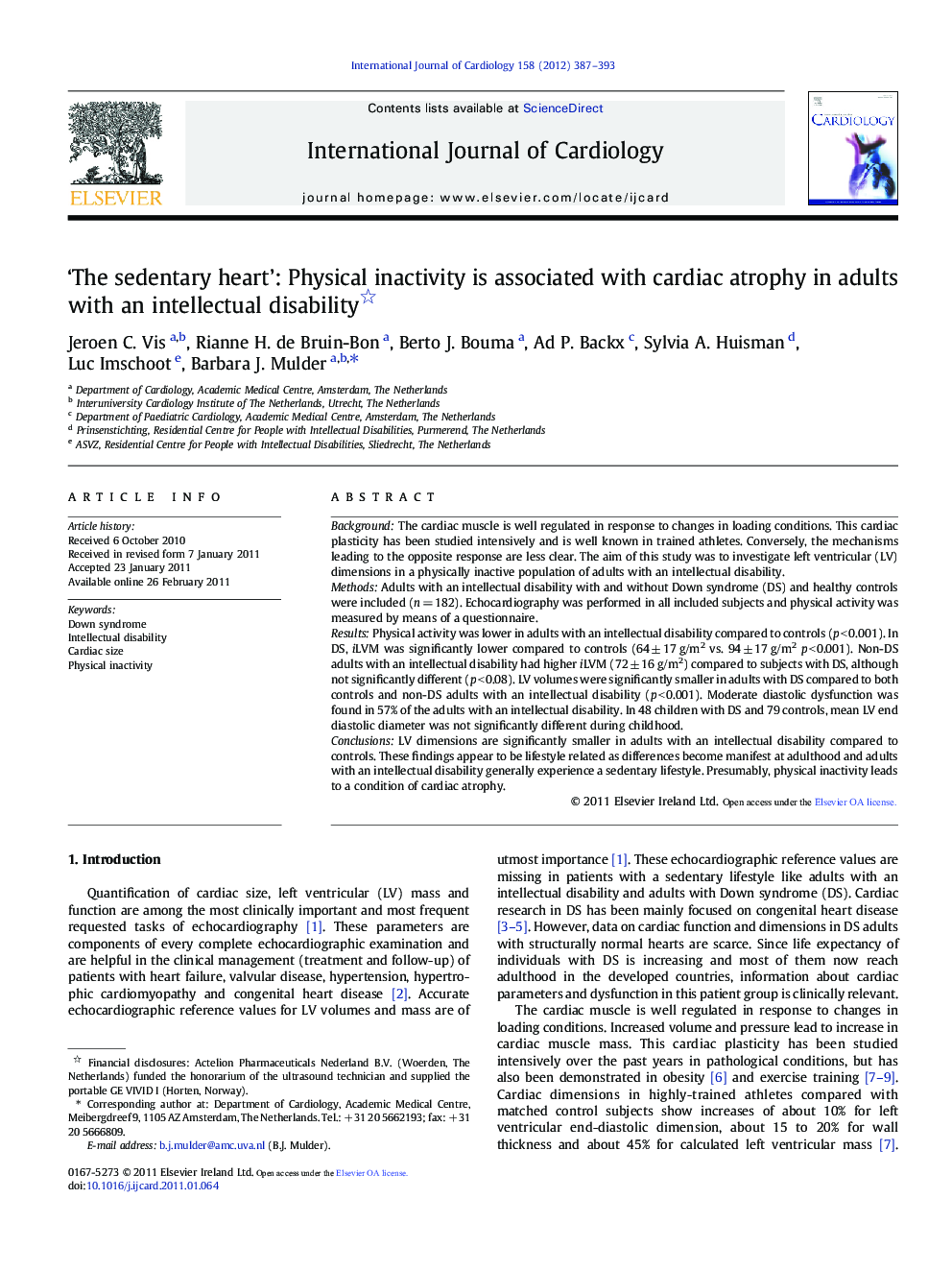| Article ID | Journal | Published Year | Pages | File Type |
|---|---|---|---|---|
| 5977549 | International Journal of Cardiology | 2012 | 7 Pages |
BackgroundThe cardiac muscle is well regulated in response to changes in loading conditions. This cardiac plasticity has been studied intensively and is well known in trained athletes. Conversely, the mechanisms leading to the opposite response are less clear. The aim of this study was to investigate left ventricular (LV) dimensions in a physically inactive population of adults with an intellectual disability.MethodsAdults with an intellectual disability with and without Down syndrome (DS) and healthy controls were included (n = 182). Echocardiography was performed in all included subjects and physical activity was measured by means of a questionnaire.ResultsPhysical activity was lower in adults with an intellectual disability compared to controls (p < 0.001). In DS, iLVM was significantly lower compared to controls (64 ± 17 g/m2 vs. 94 ± 17 g/m2p < 0.001). Non-DS adults with an intellectual disability had higher iLVM (72 ± 16 g/m2) compared to subjects with DS, although not significantly different (p < 0.08). LV volumes were significantly smaller in adults with DS compared to both controls and non-DS adults with an intellectual disability (p < 0.001). Moderate diastolic dysfunction was found in 57% of the adults with an intellectual disability. In 48 children with DS and 79 controls, mean LV end diastolic diameter was not significantly different during childhood.ConclusionsLV dimensions are significantly smaller in adults with an intellectual disability compared to controls. These findings appear to be lifestyle related as differences become manifest at adulthood and adults with an intellectual disability generally experience a sedentary lifestyle. Presumably, physical inactivity leads to a condition of cardiac atrophy.
